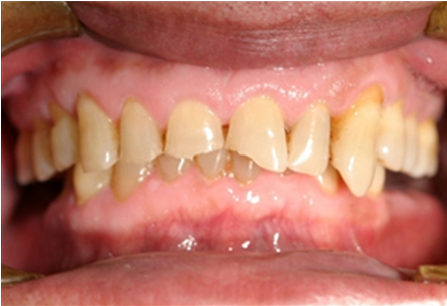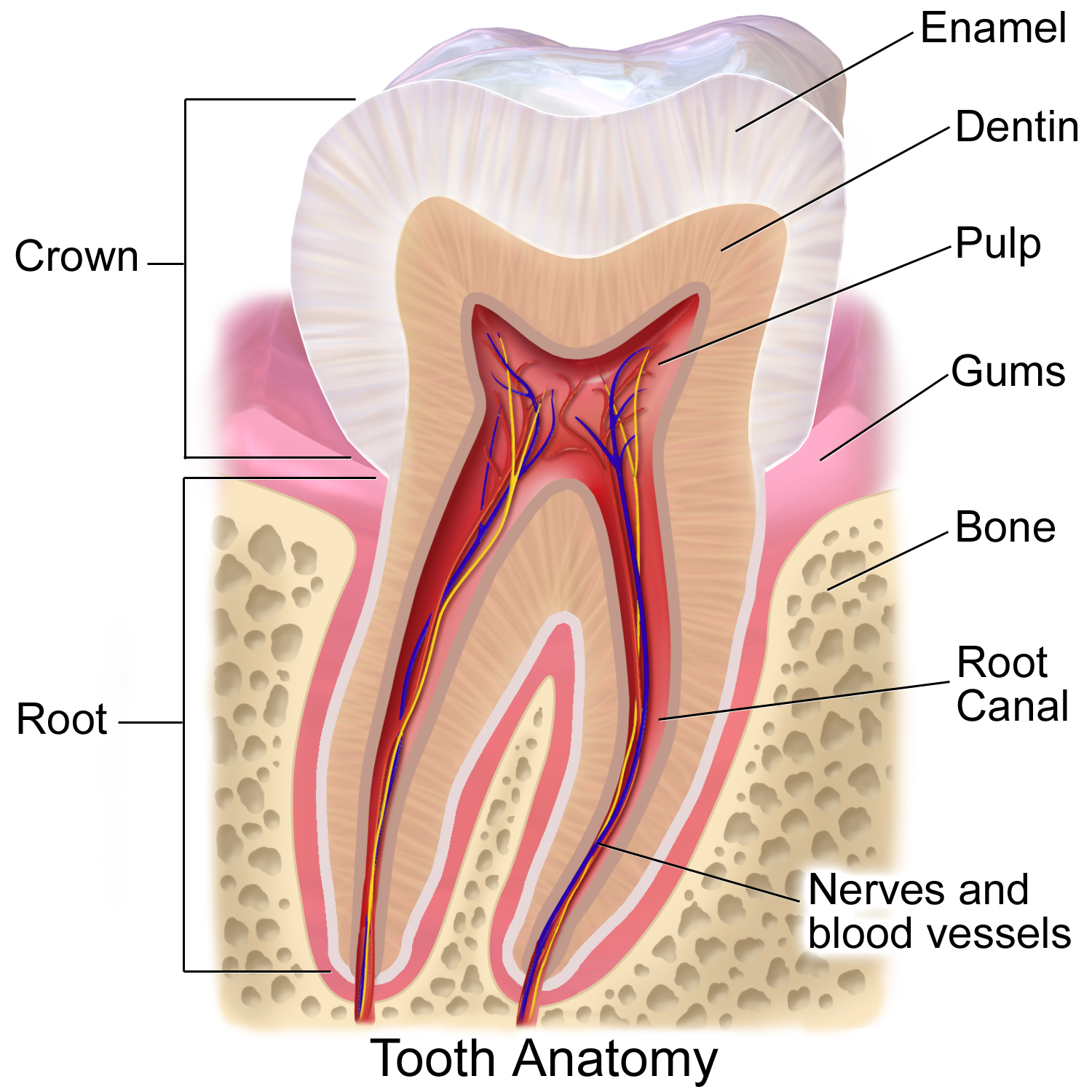|
Purging Disorder
Purging disorder is an eating disorder, more specifically a form of other specified feeding or eating disorder. It is characterised by the DSM-5 as self-induced vomiting, or misuse of laxatives, diuretics, or enemas to forcefully evacuate matter from the body. The lifetime prevalence (percentage of individuals in a population who have experienced the disorder at any point in their lives) of purging disorder has been estimated from 1.1% to 5.3%. Purging disorder differs from bulimia nervosa (BN) because individuals do not consume a large amount of food (also called a binge) prior to purging. Some of the signs of this disorder include trips to the bathroom directly after a meal, frequent use of laxatives, and obsession over one's appearance and weight. Other signs, all which are the result of excessive vomiting, consist of swollen cheeks, popped blood vessels in the eyes, and clear teeth. Purging disorder is studied far less than other eating disorders hence little information ... [...More Info...] [...Related Items...] OR: [Wikipedia] [Google] [Baidu] |
Other Specified Feeding Or Eating Disorder
Other specified feeding or eating disorder (OSFED) is a subclinical DSM-5 category that, along with unspecified feeding or eating disorder (UFED), replaces the category formerly called eating disorder not otherwise specified (EDNOS) in the DSM-IV-TR.American Psychiatric Association (2000). ''Diagnostic and statistical manual of mental disorders'' (4th ed., text rev.). Washington, DC: Author. It captures feeding disorders and eating disorders of clinical severity that do not meet diagnostic criteria for anorexia nervosa (AN), bulimia nervosa (BN), binge eating disorder (BED), avoidant/restrictive food intake disorder (ARFID), pica, or rumination disorder.American Psychiatric Association (2013). ''Diagnostic and statistical manual of mental disorders'' (5th ed.). Arlington, VA: American Psychiatric Publishing. OSFED includes five examples: * atypical anorexia nervosa, * atypical bulimia nervosa of low frequency and/or limited duration, * binge eating disorder of low frequency an ... [...More Info...] [...Related Items...] OR: [Wikipedia] [Google] [Baidu] |
Heritability
Heritability is a statistic used in the fields of Animal husbandry, breeding and genetics that estimates the degree of ''variation'' in a phenotypic trait in a population that is due to genetic variation between individuals in that population. The concept of heritability can be expressed in the form of the following question: "What is the proportion of the variation in a given trait within a population that is ''not'' explained by the environment or random chance?" Other causes of measured variation in a trait are characterized as environment (biophysical), environmental factors, including observational error. In human studies of heritability these are often apportioned into factors from "shared environment" and "non-shared environment" based on whether they tend to result in persons brought up in the same household being more or less similar to persons who were not. Heritability is estimated by comparing individual phenotypic variation among related individuals in a population, ... [...More Info...] [...Related Items...] OR: [Wikipedia] [Google] [Baidu] |
Kidney
In humans, the kidneys are two reddish-brown bean-shaped blood-filtering organ (anatomy), organs that are a multilobar, multipapillary form of mammalian kidneys, usually without signs of external lobulation. They are located on the left and right in the retroperitoneal space, and in adult humans are about in length. They receive blood from the paired renal artery, renal arteries; blood exits into the paired renal veins. Each kidney is attached to a ureter, a tube that carries excreted urine to the urinary bladder, bladder. The kidney participates in the control of the volume of various body fluids, fluid osmolality, Acid-base homeostasis, acid-base balance, various electrolyte concentrations, and removal of toxins. Filtration occurs in the glomerulus (kidney), glomerulus: one-fifth of the blood volume that enters the kidneys is filtered. Examples of substances reabsorbed are solute-free water, sodium, bicarbonate, glucose, and amino acids. Examples of substances secreted are hy ... [...More Info...] [...Related Items...] OR: [Wikipedia] [Google] [Baidu] |
Gastroesophageal Reflux Disease
Gastroesophageal reflux disease (GERD) or gastro-oesophageal reflux disease (GORD) is a chronic upper gastrointestinal disease in which stomach content persistently and regularly flows up into the esophagus, resulting in symptoms and/or complications. Symptoms include dental corrosion, dysphagia, heartburn, odynophagia, regurgitation, non-cardiac chest pain, extraesophageal symptoms such as chronic cough, hoarseness, reflux-induced laryngitis, or asthma. In the long term, and when not treated, complications such as esophagitis, esophageal stricture, and Barrett's esophagus may arise. Risk factors include obesity, pregnancy, smoking, hiatal hernia, and taking certain medications. Medications that may cause or worsen the disease include benzodiazepines, calcium channel blockers, tricyclic antidepressants, NSAIDs, and certain asthma medicines. Acid reflux is due to poor closure of the lower esophageal sphincter, which is at the junction between the stomach and ... [...More Info...] [...Related Items...] OR: [Wikipedia] [Google] [Baidu] |
Heartburn
Heartburn is a burning sensation felt behind the breastbone. It is a symptom that is commonly linked to acid reflux and is often triggered by food, particularly fatty, sugary, spicy, chocolate, citrus, onion-based and tomato-based products. Lying down, bending, lifting, and performing certain exercises can exacerbate heartburn. Causes include acid reflux, gastroesophageal reflux disease (GERD), damage to the esophageal lining, bile acid, mechanical stimulation to the esophagus, and esophageal hypersensitivity. Heartburn affects 25% of the population at least once a month. Endoscopy and esophageal pH monitoring can be used to evaluate heartburn. Some causes of heartburn, such as GERD, may be diagnosed based on symptoms alone. Potential Differential diagnosis, differential diagnoses for heartburn include motility disorders, ulcers, Esophagitis, inflammation of the esophagus, and medication side effects. Lifestyle changes, such as weight loss, losing weight and avoiding fatty food ... [...More Info...] [...Related Items...] OR: [Wikipedia] [Google] [Baidu] |
Esophagitis
Esophagitis, also spelled oesophagitis, is a disease characterized by inflammation of the esophagus. The esophagus is a tube composed of a mucosal lining, and longitudinal and circular smooth muscle fibers. It connects the pharynx to the stomach; swallowed food and liquids normally pass through it. Esophagitis can be asymptomatic; or can cause epigastric and/or substernal burning pain, especially when lying down or straining; and can make swallowing difficult ( dysphagia). The most common cause of esophagitis is the reverse flow of acid from the stomach into the lower esophagus: gastroesophageal reflux disease (GERD). __TOC__ Signs and symptoms The symptoms of esophagitis include: * Heartburn – a burning sensation in the lower mid-chest * Nausea * Dysphagia – swallowing is painful, with difficulty passing or inability to pass food through the esophagus * Vomiting (emesis) * Abdominal pain * Cough Complications If the disease remains untreated, it can cause scar ... [...More Info...] [...Related Items...] OR: [Wikipedia] [Google] [Baidu] |
Parotid Gland
The parotid gland is a major salivary gland in many animals. In humans, the two parotid glands are present on either side of the mouth and in front of both ears. They are the largest of the salivary glands. Each parotid is wrapped around the mandibular ramus, and secretes serous saliva through the parotid duct into the mouth, to facilitate mastication and swallowing and to begin the digestion of starches. There are also two other types of salivary glands; they are submandibular and sublingual glands. Sometimes accessory parotid glands are found close to the main parotid glands. The venom glands of snakes are a modification of the parotid salivary glands. Etymology The word ''parotid'' literally means "beside the ear". From Greek παρωτίς (stem παρωτιδ-) : (gland) behind the ear < παρά - pará : in front, and οὖς - ous (stem ὠτ-, ōt-) : ear. Structure The parotid glands are a pair of mainly[...More Info...] [...Related Items...] OR: [Wikipedia] [Google] [Baidu] |
Tooth Enamel
Tooth enamel is one of the four major Tissue (biology), tissues that make up the tooth in humans and many animals, including some species of fish. It makes up the normally visible part of the tooth, covering the Crown (tooth), crown. The other major tissues are dentin, cementum, and Pulp (tooth), dental pulp. It is a very hard, white to off-white, highly mineralised substance that acts as a barrier to protect the tooth but can become susceptible to degradation, especially by acids from food and drink. In rare circumstances enamel fails to form, leaving the underlying dentin exposed on the surface. Features Enamel is the hardest substance in the human body and contains the highest percentage of minerals (at 96%),Ross ''et al.'', p. 485 with water and organic material composing the rest.Ten Cate's Oral Histology, Nancy, Elsevier, pp. 70–94 The primary mineral is hydroxyapatite, which is a crystalline calcium phosphate. Enamel is formed on the tooth while the tooth develops wit ... [...More Info...] [...Related Items...] OR: [Wikipedia] [Google] [Baidu] |
Subconjunctival Bleeding
Subconjunctival bleeding, also known as subconjunctival hemorrhage or subconjunctival haemorrhage, is bleeding from a small blood vessel over the whites of the eye. It results in a red spot in the white of the eye. There is generally little to no pain and vision is not affected. Generally only one eye is affected. Causes can include coughing, vomiting, heavy lifting, straining during acute constipation or the act of "bearing down" during childbirth, as these activities can increase the blood pressure in the vascular systems supplying the conjunctiva. Other causes include blunt or penetrating trauma to the eye. Risk factors include hypertension, diabetes, old age, and blood thinners. Subconjunctival bleeding occurs in about 2% of newborns following a vaginal delivery. The blood accumulates between the conjunctiva and the episclera. Diagnosis is generally based on the appearance of the conjunctiva. The condition is relatively common, and both sexes are affected equally. Sponta ... [...More Info...] [...Related Items...] OR: [Wikipedia] [Google] [Baidu] |
The Thin Ideal
The thin ideal is the concept of the ideally slim female body. The common perception of this ideal is a woman who possesses a slender, feminine physique with a small waist and little body fat. The size that the thin ideal woman should be is decreasing while the rate of female obesity is simultaneously increasing, making this iconic body difficult for women to maintain.Pinhas, Leora, Brenda B. Toner, Alisha Ali, Paul E. Garfinkel, and Noreen Stuckless. "The Effects of the Ideal of Female Beauty on Mood and Body Satisfaction." ''International Journal of Eating Disorders'' (1998): 223-26. This creates a gap between the actual appearance of an average woman’s body and its expected appearance which, depending on the extent to which a woman internalizes the necessity of living up to this ideal for her well-being and peace of mind, may have serious psychological effects. Internalization The degree to which women are psychologically affected by the thin ideal depends to what extent th ... [...More Info...] [...Related Items...] OR: [Wikipedia] [Google] [Baidu] |
DSM-5
The ''Diagnostic and Statistical Manual of Mental Disorders, Fifth Edition'' (DSM-5), is the 2013 update to the '' Diagnostic and Statistical Manual of Mental Disorders'', the taxonomic and diagnostic tool published by the American Psychiatric Association (APA). In 2022, a revised version ( DSM-5-TR) was published. In the United States, the DSM serves as the principal authority for psychiatric diagnoses. Treatment recommendations, as well as payment by health care providers, are often determined by DSM classifications, so the appearance of a new version has practical importance. However, some providers instead rely on the International Statistical Classification of Diseases and Related Health Problems (ICD), and scientific studies often measure changes in symptom scale scores rather than changes in DSM-5 criteria to determine the real-world effects of mental health interventions. The DSM-5 is the only DSM to use an Arabic numeral instead of a Roman numeral in its title, as ... [...More Info...] [...Related Items...] OR: [Wikipedia] [Google] [Baidu] |
Dieting
Dieting is the practice of eating food in a regulated way to decrease, maintain, or increase body weight, or to prevent and treat diseases such as diabetes and obesity. As weight loss depends on calorie intake, List of diets, different kinds of Calorie restriction, calorie-reduced diets, such as those emphasising particular macronutrients (low-fat diet, low-fat, low-carbohydrate diet, low-carbohydrate, etc.), have been shown to be no more effective than one another. As weight regain is common, diet success is best predicted by long-term adherence. Regardless, the outcome of a diet can vary widely depending on the individual. The first popular diet was "Banting", named after William Banting. In his 1863 pamphlet, ''Letter on Corpulence, Addressed to the Public'', he outlined the details of a particular low-carbohydrate, low-calorie diet that led to his own dramatic weight loss. Some guidelines recommend dieting to Weight loss, lose weight for people with weight-related health pr ... [...More Info...] [...Related Items...] OR: [Wikipedia] [Google] [Baidu] |






